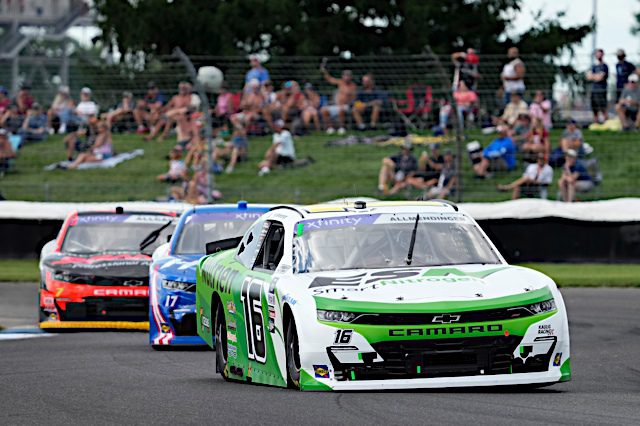The Lombardi Trophy. The Larry O’Brien Championship Trophy. The Harley J. Earl Trophy. The Borg-Warner Trophy.
Yes, all are trophies, but more importantly, the identity of each one is unquestionable. When you see them, you know what their connection is.
The NASCAR Cup Series is the world’s top echelon of stock car racing. The NASCAR Camping World Truck Series is the pickup version of the Cup Series with up-and-coming drivers sprinkled in with some truck lifers and the occasional twilight-years driver. But what is the identity of the NASCAR Xfinity Series?
A quarter of a century ago, NASCAR’s top three divisions’ identities were cut and dry. The Cup Series image hasn’t changed, as it was and remains the highest form of stock car racing. Trucks were a series that raced the majority of its schedule on oval tracks less than one mile in length, with a few larger speedways and road courses.
The Xfinity Series in the late 1990s, then the NASCAR Busch Series, was a blend of the two divisions. Short tracks, speedways, superspeedways and road courses filled out the schedule. Additionally, standalone races were common. These standalone races could be at tracks the Cup or even Trucks visited at different times of the season. They also could have been tracks exclusive to the Xfinity Series.
But in 2022, 32 of the 33 races the Xfinity field races at are support races for the Cup Series — racing at the same track on the same weekend. The race at Portland International Raceway in June was the lone standalone race.
Part of the identity of the Xfinity Series 25 years ago and even as recent as 11 years ago was that it traveled to tracks and markets the Cup Series didn’t. It raced on tracks like Nashville Fairgrounds Speedway, Myrtle Beach Speedway, Pikes Peak International Raceway, World Wide Technology Raceway (Gateway), Kentucky Speedway and Memphis International Raceway. The only way the biggest stars in NASCAR would race there was if they raced in the Xfinity Series.
For many reasons, not limited to financial and economical, these tracks were dropped or replaced, and slowly NASCAR’s second-tier series began to look more and more like Cup 2.0. This change wasn’t limited to the Xfinity Series, but the Trucks still went to Canada and raced on dirt. And this, on top of being pickup trucks and not a car, made the Truck Series have more of a standout identity with unique races compared to Xfinity.
A small shot in the arm for Xfinity Series uniqueness…
Click Here to Read the Full Original Article at Frontstretch…

